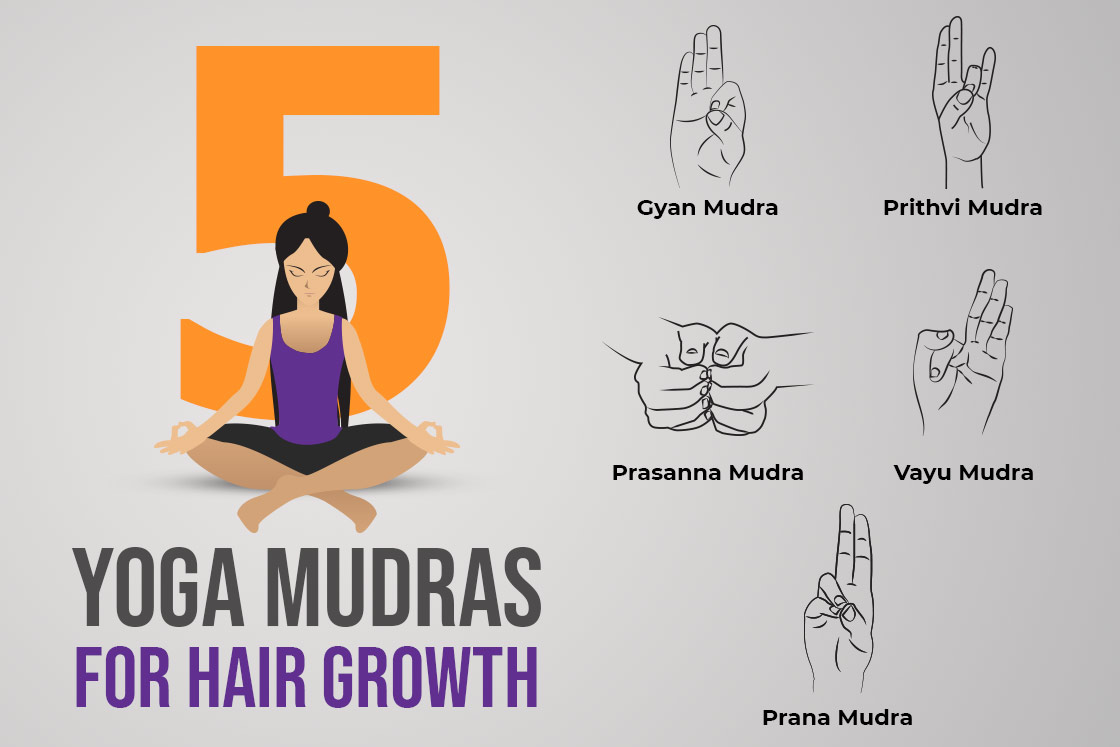Granthita Mudra (Knot Gesture): How to Practice and Its Benefits
Granthita Mudra, also known as the Knot Mudra, is a powerful hand gesture used in yoga and meditation. It helps to release emotional and energy blockages in the body and mind. The word “Granthita” comes from the Sanskrit word...

>>Download Yoga Mudras Free PDF!

Granthita Mudra, also known as the Knot Mudra, is a powerful hand gesture used in yoga and meditation. It helps to release emotional and energy blockages in the body and mind. The word “Granthita” comes from the Sanskrit word “granthi,” which means “knot.” This mudra is like untying knots inside us. It calms the mind and helps people focus better, making it easier to meditate deeply.
Focusing primarily on the Vishuddha Chakra, or throat chakra, Granthita Mudra enhances communication and self-expression, boosts confidence, and may support thyroid health and throat function.
To practice this mudra, touch the tips of your thumbs and index fingers together on each hand, interlace the other fingers, and fold them inward. This position helps direct energy flow towards the throat chakra, fostering inner balance and well-being.
Meaning
The term “Granthita” comes from the Sanskrit word “granthi,” meaning “knot.” This term reflects the mudra’s purpose of addressing and releasing internal blockages. Granthita Mudra symbolizes the untying of emotional and energetic knots within the body and mind. By focusing on the throat chakra (Vishuddhi Chakra), this mudra helps to clear disruptions in energy flow and relieve emotional burdens.
The throat chakra, associated with the element of ether (space), is essential for communication and self-expression. Balancing this chakra through Granthita Mudra clears blockages, enhancing one’s ability to communicate openly and honestly. This mudra not only helps to release emotional tensions but also encourages a smoother flow of energy, supporting overall well-being.
How to do granthita mudra(steps)
Sit comfortably in a meditative posture with your spine straight and your body relaxed. Position your hands at chest level, slightly away from your body. Interlace the tips of your middle, ring, and pinky fingers on the upper side of your hands. Interlock your thumbs and index fingers, bringing their tips together to form two rings. Gently raise the mudra to the base of your throat. Keep your shoulders relaxed and ensure your body is at ease. Hold the mudra while focusing on your breath breathe in deeply and exhale completely. Practice the mudra for 30 minutes daily, which can be done in one go or divided into shorter sessions. Optionally, you can use the mantra “HAM” during your practice to deepen the effect.Time & duration
Duration: Practice Granthita Mudra for 30 minutes daily. This can be done in one continuous session or broken into shorter intervals, such as three 10-minute sessions. Ideal Time: Perform this mudra early in the morning or in the evening when you are calm and free from distractions. This allows for better focus and enhances the effectiveness of the practice.Precautions & contradictions
Avoid performing Granthita Mudra if you have any injuries or pain in your hands or wrists to prevent worsening the condition. Stop immediately if you experience any pain, tingling, or discomfort while holding the mudra. Choose a comfortable seated position to avoid strain and adjust as needed to stay relaxed. Maintain smooth, steady breathing throughout the practice. Do not hold your breath or force the mudra. Start with shorter practice sessions and gradually increase the duration as you become more comfortable with the mudra. Keep your shoulders and body relaxed to prevent unnecessary tension. Practice in a quiet, distraction-free space to enhance focus and effectiveness.Side effects
Granthita Mudra generally does not have significant side effects. However, it’s crucial to listen to your body and practice with awareness. If you have existing hand or wrist injuries, you might experience discomfort, so it’s best to avoid performing the mudra in such cases.
Granthita mudra benefits
Granthita Mudra enhances communication skills and emotional balance by focusing on the throat chakra. This mudra helps release emotional blockages and improves self-expression, contributing to greater mental clarity and well-being. Regular practice fosters openness and confidence in both personal and social interactions.
Balances the Throat Chakra: This mudra helps open and balance the throat chakra, crucial for clear communication and self-expression. Activating this energy center improves your ability to speak your truth and express yourself effectively.. Enhances Concentration and Memory: Regular practice stimulates the brain and boosts blood flow, which enhances focus, concentration, and memory. This leads to better mental clarity and cognitive function. Supports Thyroid and Throat Health: Granthita Mudra can positively impact physical issues related to the thyroid, throat, neck, and shoulders. It helps maintain balance in these areas, potentially easing discomfort and supporting overall health. Improves Energy Flow: By balancing the throat chakra, the mudra promotes smoother energy flow throughout the body. This improved circulation enhances vitality and maintains a balanced state of mind. Reduces Stress and Anxiety: Granthita Mudra helps reduce stress and anxiety by balancing the nervous system. It promotes relaxation, which can improve sleep quality and combat insomnia. Facilitates Emotional Release: The mudra aids in releasing emotional blockages, fostering a sense of calm and inner peace. This helps in feeling more connected and less burdened by emotional or energetic knots. Boosts Self-Confidence: By enhancing self-expression and communication, Granthita Mudra builds self-assurance and promotes a sense of inner strength. This empowers you to speak your truth and assert yourself more confidently..Conclusion
Granthita Mudra( Knot Mudra), is an effective practice for addressing and releasing mental and emotional blockages. By focusing on the throat chakra, it enhances communication, fosters self-confidence, and promotes clear self-expression. Incorporating this mudra into your daily routine can significantly improve emotional well-being and support personal growth, leading to a more balanced and confident state of mind.

 MikeTyes
MikeTyes 































